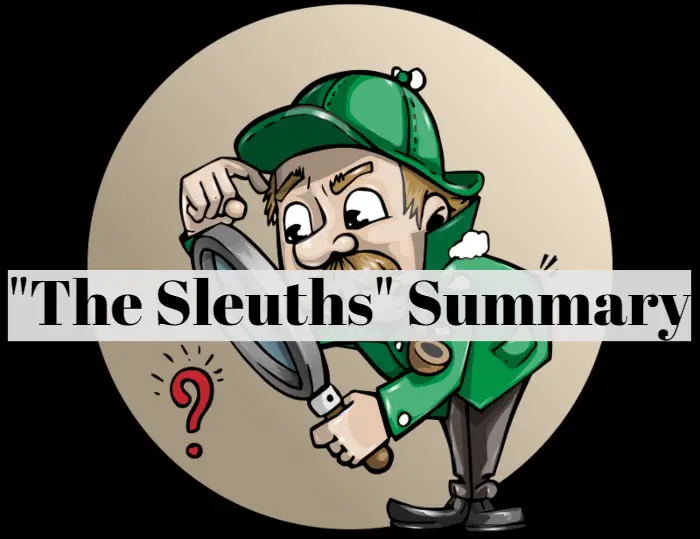“The Sleuths” Summary
Meeks, a middle-aged man, arrives in New York from the West in search of his sister, Mary Snyder, aged fifty-two. He has recently made money in a mine and wants to help his poor sister. He goes to the tenement she lives in, but is told she moved out over a month ago. Her whereabouts are unknown.
Meeks starts by going to the police. A picture of her is quickly distributed to all the stations. Detective Mullins is assigned to the case.
Over a meal at the Waldorf, Mullins puts forward his first plan—put an audition ad in the paper for a hundred attractive chorus girls. This makes no sense to Meeks, so Mullins gives his second idea—rent out expensive rooms at the Waldorf and wait for the city to put out the new directory in spring. Meeks gets rid of Mullins.
Meeks goes to Shamrock Jolnes, New York’s most famous private detective. After a long wait, he informs Jolnes of the details, including that Mary worked as a cleaner. Jolnes accepts the case for a fee of $500, if successful. He recounts the details of a successful but ridiculous case from a year ago.

They go to the tenement where Mary lived, still empty. Jolnes collects a few items from the place—a hat pin, a piece of a theatre programme, and a piece of a card with the word “left” and the characters “C 12”. He thinks a while and announces the case is solved. They can go to the house she’s in, and she’s doing fine financially, as well.
Impressed, Meeks wants an explanation. Jolnes deduced from the hat pin and shawl hanging on the wall that she didn’t go to Brooklyn or Harlem. From the card with the writing and the torn programme, he concocts a theory of her finding jewelry while working at the theatre, selling it, and moving into number 12 Avenue C.
They go to the house but Mary isn’t known there. Meeks thinks the writing simply identifies a seat in a theatre. Jolnes recommends they go to Juggins, a modern detective. He takes him there and Mullins states the case to Juggins.
With the details of the case and a physical description of Mary (she’s not attractive), Juggins claims he’ll be back in fifteen minutes with her location. He returns with the information—she’s at 162 Chilton street on the fifth floor.
Meeks rushes off and returns twenty minutes later, beaming happily. Mary was exactly where Juggins said. Juggins charges $2 for his services and Meeks leaves.
Having stayed behind, Jolnes asks Juggins how he did it. Based on the unappealing description of Mary, he knew she would be paying installments on an enlarged crayon portrait of herself. He simply went to the factory and got her address from the book.
I hope this summary of “The Sleuths” by O. Henry was helpful.